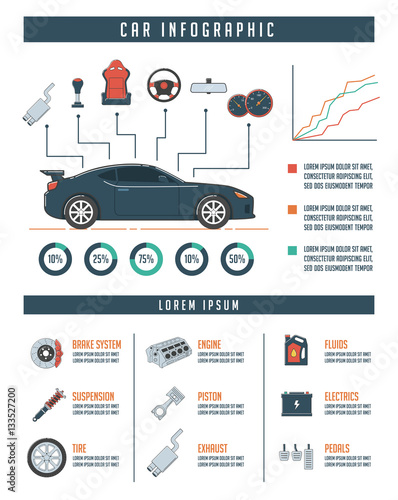Interpreting Your Automobile'S Alert Lights: Their Real Effects
Interpreting Your Automobile'S Alert Lights: Their Real Effects
Blog Article
Created By-Vinson Forbes
When you lag the wheel, those glowing warning lights on your control panel can be a little bit perplexing. Do you know what they're attempting to tell you regarding your cars and truck's health? Comprehending the significance of these lights is important for your security and the longevity of your car. So, auto marine detailing among those lights pops up, wouldn't you want to analyze its message accurately and take the necessary actions to address it?
Common Warning Lighting and Interpretations
Recognize typical warning lights in your car and understand their definitions to ensure safe driving.
The most typical caution lights consist of the check engine light, which signals concerns with the engine or exhausts system. If this light comes on, it's essential to have your automobile inspected without delay.
The oil pressure alerting light shows low oil stress, calling for immediate interest to stop engine damages.
A blinking battery light could recommend a malfunctioning billing system, possibly leaving you stranded otherwise attended to.
The tire stress surveillance system (TPMS) light alerts you to reduced tire stress, affecting lorry security and fuel performance. Overlooking https://tysonnhdyr.slypage.com/30475401/auto-describing-for-each-season-how-to-get-your-auto-prepared-year-round can bring about hazardous driving problems.
The abdominal light shows a trouble with the anti-lock stopping system, endangering your ability to stop promptly in emergencies.
Last but not least, the coolant temperature cautioning light warns of engine getting too hot, which can result in severe damage otherwise fixed swiftly.
Comprehending try this website will assist you attend to problems promptly and maintain risk-free driving conditions.
Relevance of Prompt Attention
Recognizing the typical warning lights in your cars and truck is only the very first step; the significance of immediately dealing with these warnings can't be stressed sufficient to guarantee your security when driving.
When a caution light brightens on your dashboard, it's your automobile's way of communicating a potential issue that requires focus. Ignoring these warnings can lead to a lot more serious troubles in the future, compromising your safety and potentially costing you more out of commission.
Trigger focus to alerting lights can protect against breakdowns and crashes. For example, a flashing check engine light might indicate a misfire that, if left ignored, could create damages to the catalytic converter. Addressing this quickly can conserve you from an expensive repair.
Similarly, a brake system alerting light may signal reduced brake liquid or used brake pads, important parts for your security when driving.
DIY Troubleshooting Tips
If you notice a caution light on your control panel, there are a few do it yourself troubleshooting ideas you can try before seeking professional assistance.
The first step is to consult your automobile's manual to understand what the particular warning light indicates. Often the problem can be as straightforward as a loose gas cap setting off the check engine light. Tightening up the gas cap might resolve the problem.
An additional usual problem is a reduced battery, which can trigger different advising lights. Checking the battery connections for deterioration and guaranteeing they're secure may take care of the problem.
If a caution light lingers, you can try resetting it by separating the vehicle's battery for a couple of minutes and afterwards reconnecting it. Additionally, examining your vehicle's liquid levels, such as oil, coolant, and brake liquid, can assist troubleshoot warning lights related to these systems.
Final thought
Finally, comprehending your vehicle's warning lights is necessary for maintaining your vehicle running smoothly and securely. By quickly addressing these notifies and knowing what they imply, you can stay clear of pricey fixings and prospective malfunctions.
Bear in mind to consult your car's manual for certain information on each alerting light and do something about it as necessary to make sure a trouble-free driving experience.
Remain notified, remain risk-free when traveling!
